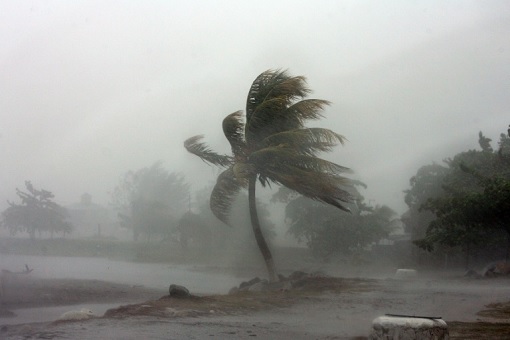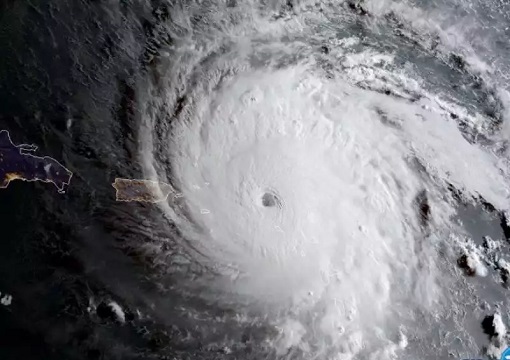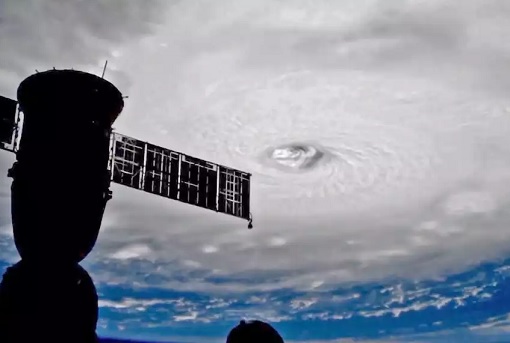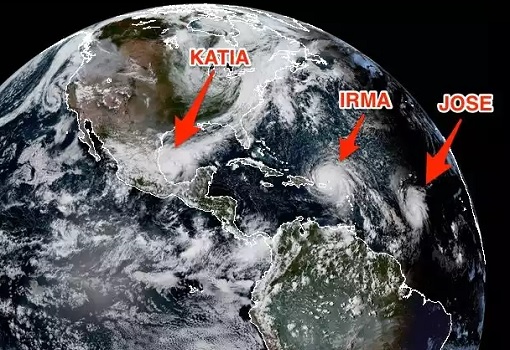Jeff Masters, a meteorologist, said – “The U.S. has never been hit, since we started collecting records in 1851, by two Category 4 or stronger hurricanes in the same season.” After tearing through the Caribbean, Irma could potentially slam into the U.S. by the weekend or early next week. By then, it is expected (or rather hopefully) to lose some steam – becoming a Category 4.
Less than a week after Hurricane Harvey tore through Texas and Louisiana, causing at least 60 deaths and billions of dollars in damages – possibly higher than Katrina – Hurricane Irma is already setting records. Category 5 hurricane on the Saffir-Simpson scale is extremely rare. To be qualified as Category 5, a hurricane has to have winds of at least 155 mph (250 kmh).
At 185 mph (298 kmh), Hurricane Irma is a monster storm which is ready to deliver “catastrophic damage” – total roof failure, wall collapses, fallen trees, power outages and whatnot. The only Category 5 hurricanes to hit the U.S. are Andrew in 1992, Camille in 1969 and “Labour Day” in 1935. But all of them pale in comparison to Irma.

Not even the infamous Katrina (175 mph) could match Irma. And Katrina, the costliest natural disaster in U.S. history at US$125 billion, was “only” measured as a Category 3 at landfall. Only one hurricane has beaten Irma for the top spot – the Hurricane Allen in 1980 – with sustained winds speed of 190 mph (306 kmh).
But Irma is creating a new record which not even Allen could match. Irma has sustained 185 mph winds for more than 24 hours – a record length of time. When the eye of Irma passed over Barbuda during the morning of September 6, about 95% of buildings and vehicles in the Caribbean nation was destroyed, leaving the island “barely habitable.”
Irma’s 185 mph winds also make it the strongest storm on record in the Atlantic Ocean outside of the Caribbean and Gulf of Mexico. In fact, according to meteorologist Phil Klotzbach, a research scientist at Colorado State University’s Department of Atmospheric Science, Hurricane Irma is stronger than all of 2017’s eight major Atlantic storms combined.

Unlike Hurricane Harvey, which has claimed about 60 lives and caused property damage estimated as high as US$230 billion, President Trump and the White House are monitoring Irma. Mr Trump, whose waterfront Mar-a-Lago estate in Palm Beach, Florida, could take a direct hit from the storm, has already declared a state of emergency for Florida, Puerto Rico and the U.S. Virgin Islands.
By Sunday, Irma is expected to reach Florida and by then, the catastrophic flooding will begin. A storm is dangerous because it possesses 3 deadly weapons – floods from storm surge, heavy rainfall and damaging winds. And Irma has all three of them. When Florida was hit by Hurricane Donna in 1960 as a Category 4 storm (140 mph), residents of the Florida Keys experienced 13-foot storm surges.
If a hurricane of this magnitude hit Florida today, it could cause between US$50 billion to US$100 billion in damages. Already, social media users asked if the super powerful Hurricane Irma could and should be categorized as a Category 6 storm. Just because the Saffir-Simpson scale says Category 5 is the highest possible level, doesn’t mean Irma couldn’t go beyond that.

But seriously, just how powerful is Hurricane Irma? Experts say Irma is now so powerful it is registering on devices designed to “detect earthquakes”. A storm being picked up by earthquake readers speaks volumes about the insane power of Irma. Even from the International Space Station, Irma was clearly visible by naked eyes.
Still has no clue how powerful and huge Irma is? As of morning on September 6, its eye is almost as big as the Detroit metropolitan area, and the entire hurricane would engulf the state of Michigan. That’s 96,716 square miles – almost twice the size of Peninsula Malaysia and more than the size of North Korea and South Korea combined.
Adding salt into injury, Hurricane Irma doesn’t come alone. It brings along two other hurricanes – Katia and Jones. Yes, there’re now 3 active hurricanes in the Atlantic basin. Jose is located in the Atlantic while Katia is in the Gulf of Mexico. The good news – both Katia and Jose were Category 1 storms as of Wednesday evening, making them far less dangerous than Irma.

Katia, with winds between 75 and 110 mph, is expected to make landfall with Mexico’s east coast Friday night or Saturday morning, moving west towards Veracruz and later to Mexico City. Still, Katia could bring total rainfall accumulations between 5 and 10 inches to northern Veracruz and possibly causing flash-floods and mudslides.
Meanwhile, Category 1 storm Jose, which was upgraded from its tropical storm status beginning September 6, has also seen top-speed winds of 75 mph. Because Jose is behind Irma with unclear path, further out in the Atlantic Ocean, this storm could intensify as the week goes on and turns into another monster.
Other Articles That May Interest You …
- A US-China Trade War About To Happen – Here’s Why The Yankees Can’t Win
- Once Roared With 10 Sex Partners, Tiger Woods’ Arrest Could Lose Him Millions
- Globalism & Capitalism Not Working – 0.7% Rich Population Control US$116.6 Trillion
- The Impact On Disneyland & Florida’s Tourism By Orlando Terorrism
- Britain Considers Importing Sir Mikey Bloomberg As London Mayor
- Here’s What $100 Is Actually Worth In Each State Of America
- A New Yorker Suing For More Money Than Earth Has

|
|
September 7th, 2017 by financetwitter
|


|

|

|

|

|

|




























Comments
Add your comment now.
Leave a Reply